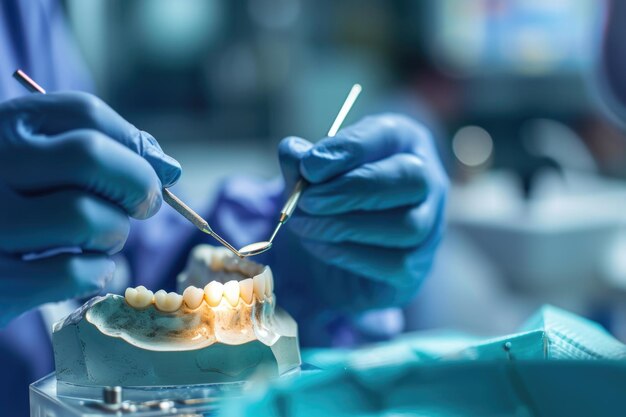Transformative Dental Crown Cases at Leading Dentist in Mexico
Previous
Next
One of the most popular reasons that have earned porcelain crowns a stellar reputation is their excellent results in aesthetic treatments, especially when aiming to enhance the shape, size, color, or alignment of teeth.
Porcelain crowns also serve as an excellent solution when natural teeth suffer extensive damage from cavities, fractures, multiple restorations, or as a restoration of choice for a tooth that has undergone root canal treatment.
But before delving into the details, it’s crucial to understand what a porcelain crown is: Dental crowns are restorations that entirely cover the part of the tooth visible above the gum line (clinical crown). Their primary purpose is to restore function, protect, and preserve the remaining tooth structure.
To put it simply, crowns are like a helmet for a motorcyclist’s head. They are also known as porcelain jackets. While today, the majority of crowns are made of porcelain or zirconia, it’s important to note that they are not the only alternatives. There are also entirely metallic crowns, which can be made of precious metals (with a high gold content), semi-precious, or non-precious metals. As you can imagine, these crowns are not aesthetic and are used in reserved cases, such as patients who tend to grind their teeth, and they are not used on front teeth. Another option is metal-porcelain crowns, which are metallic on the inside and porcelain on the outside. However, these crowns are becoming less common as porcelain or zirconia crowns have surpassed them in both aesthetics and function.

While porcelain crowns offer many advantages, it’s important to note that they should not be chosen without a well-justified reason. Among the most important reasons, we can mention the following two:
Enhancing the Aesthetics and Function of a Tooth:
Strengthening the Tooth:

Advantages of a Crown Over Direct Restoration
One might think that a direct dental restoration, such as a resin, could be a better alternative to a crown. However, there are essential reasons to believe otherwise:
Laboratory Fabrication: Crowns are crafted in the dental laboratory by a specialized technician or through the most advanced technology in dentistry, such as a CAD-CAM system. This allows for a more detailed analysis of the patient’s bite, jaw movements from a variety of angles, and a microscopic review of these details before crafting the crown, providing an ideal form and function.
Durability and Aesthetics: While a direct restoration has space limitations (confined to the patient’s mouth), visual limits, higher risks of contamination due to the surrounding saliva, and, most importantly, lower durability, aesthetics, and performance compared to a ceramic or zirconia crown.

Now, let’s address a common question: Are porcelain or zirconia crowns forever? Unfortunately, the answer is no. A well-made crown with a good fit, sealing, and occlusal contacts can last for many years but not indefinitely. Statistics show (Pjetursson 2007) that over 90% of crowns function well after 10 years of use in the mouth, and over 80% remain successful after 25 years of use (Walton 2013). These are considered favorable data, considering the demanding use of these dental prostheses by anyone wearing them. Several factors determine the lifespan of porcelain crowns, zirconia crowns, or any other type of dental crown:
Several factors intervene in this instance, such as: The type of material the crown is made out of, the fabrication technique of the crown (computerized or manual), and some factors that in theory should not play a large role in determining the cost — such as the size of the city, or even the country where the treatment is being carried out — but which do end up having an effect.
In the following table, we show the cheapest and most expensive options for different kinds of crowns, as well as the prices offered by our clinic.